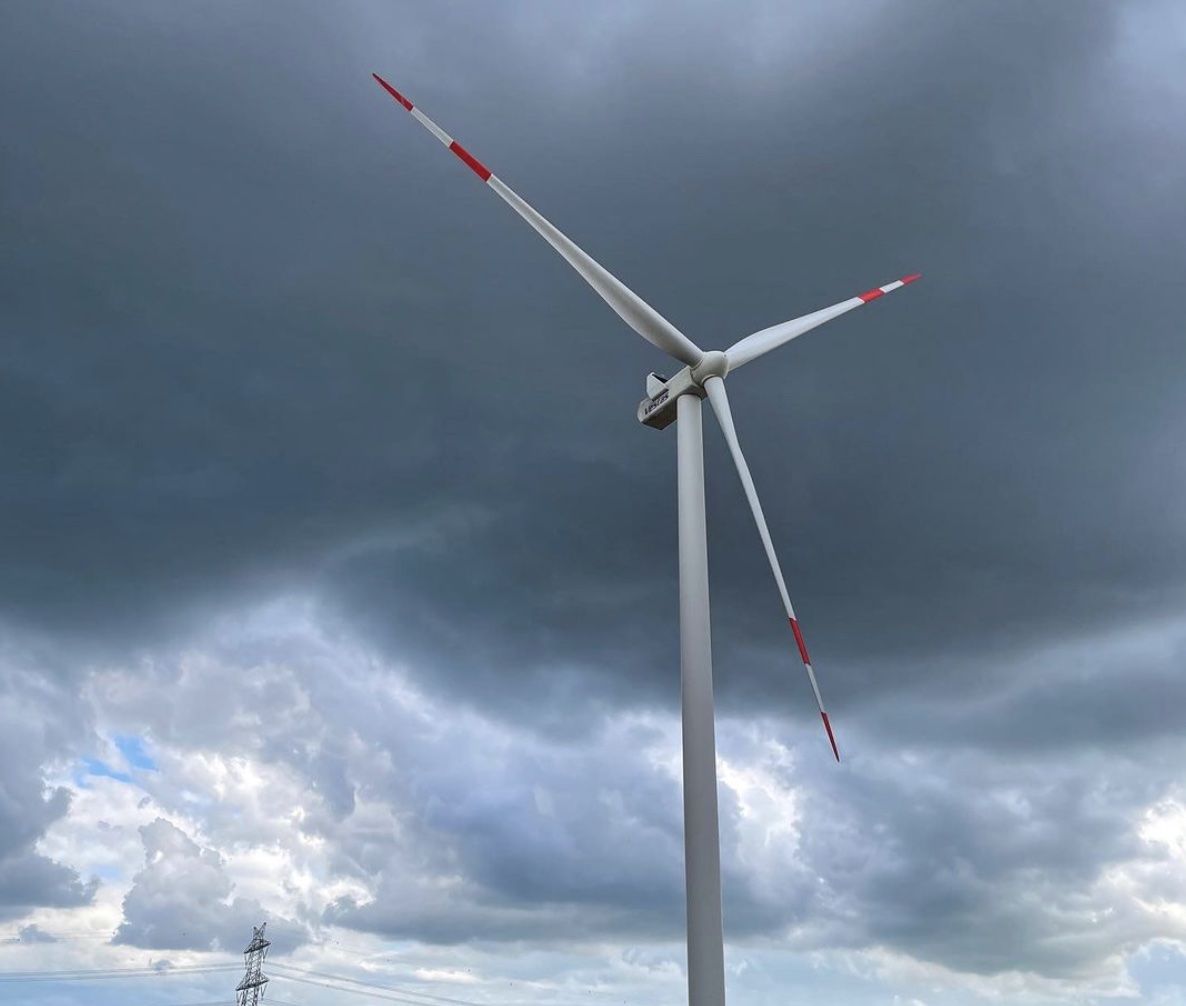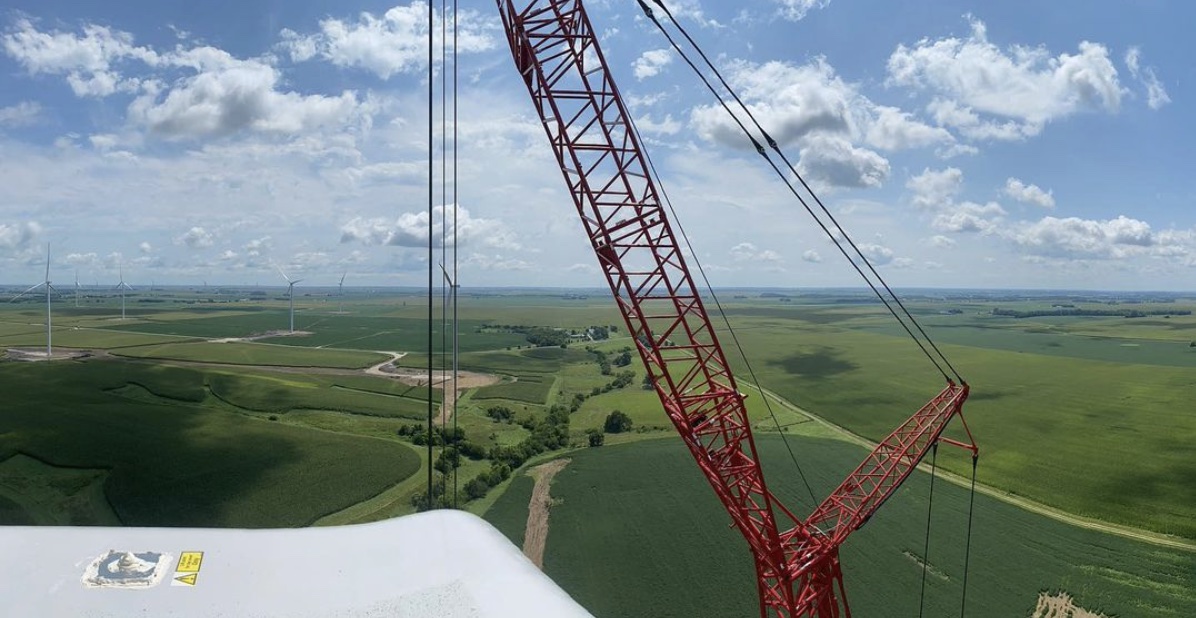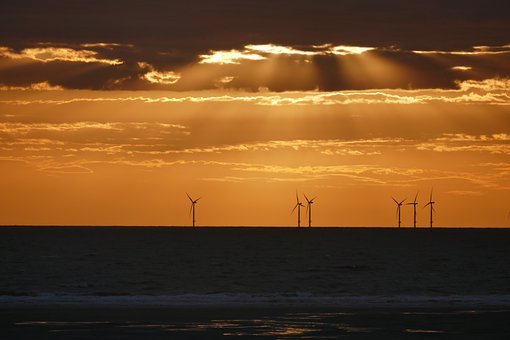Converging Tailwinds Propel Wind Plus Storage to Center Stage
 The growth of wind energy and other forms of renewable generation have been the main drivers in the development of energy storage since 2010. However, energy storage is typically most closely associated with solar energy rather than wind. This dynamic has driven the rapid rise in co-located solar plus storage projects, where solar PV generation and battery storage are built and operated at the same site. Although combined wind plus storage projects offer similar benefits and potential, deployment levels for these combined project pale in comparison to those of solar plus storage.
The growth of wind energy and other forms of renewable generation have been the main drivers in the development of energy storage since 2010. However, energy storage is typically most closely associated with solar energy rather than wind. This dynamic has driven the rapid rise in co-located solar plus storage projects, where solar PV generation and battery storage are built and operated at the same site. Although combined wind plus storage projects offer similar benefits and potential, deployment levels for these combined project pale in comparison to those of solar plus storage.
As the global energy storage market has matured and the prices for new projects have fallen, there is an increase in the development of new colocated wind plus storage projects where batteries or other technologies are directly used for wind integration services. From 2012 to 2020, average prices for new utility-scale energy storage projects decreased globally by nearly 58 percent, opening opportunities for new use cases to be cost-effective. Yet colocated wind plus storage remains a nascent market. To grow and scale sustainably, several technological, regulatory, and business-model barriers must be addressed.
Why has wind fallen behind solar in adopting energy storage?
Both technical and economic factors contribute to the limited development of wind plus storage projects. One major factor is wind generation's greater variability and uncertainty; wind plants face longer periods of low or no production that are not always easy to forecast, and do not follow the predictable patterns of solar. Using energy storage to provide wind power as a baseload or even peaking resource on the grid is uneconomical with modern storage technologies. Wind turbines provide inertia in the spinning blades, which results in slower and less dramatic ramp rates compared with solar, where passing clouds or the setting sun can drop a plant's output to near zero quickly. As a result, there is less of a technical need for energy storage to facilitate grid integration of wind power than solar.
Key economic and regulatory issues have also slowed the development of wind plus storage relative to solar. The amount of energy that must be stored and shifted from a wind plant to offer an economic use for energy storage is high, given the longer periods of low production and the fact that wind plants are typically most productive during night (off-peak hours). In many markets, wind generation is paid a premium above wholesale market prices through power purchase agreements, limiting the need to shift production to peak periods as revenue is guaranteed per megawatt-hour generated.

In the US, most wind projects are funded in part with the Production Tax Credit (PTC). Both wind and solar plants are able to use the Investment Tax Credit (ITC), which reduces the upfront investment in a project through tax credits. With wind, the ITC is roughly equivalent to 25-30 percent of the total upfront wind plant cost, and this value is nearly equivalent to the long-term PTC. Although wind farms qualify for both credits, they cannot take both and the PTC is almost always more lucrative for wind. This is primarily because the ITC requires a much higher tax burden among project owner partners to efficiently monetize it versus the long-term PTC. Due to these barriers, the wind sector has yet to identify replicable business models and structures for integrating energy storage.
Key considerations for stakeholders looking to embrace wind plus storage
The pace of new projects combining energy storage with wind generation is accelerating. Most new wind plus storage projects are built to meet site-specific interconnection requirements or to simply take advantage of cost-savings through co-location. Over time, the continually growing penetration of renewable energy on the grid is expected to drive new opportunities for larger scale wind plus storage projects, including those using innovative long-duration storage technologies.
- The PTC Phaseout: The success of the wind market is triggering reductions or eliminations of many of the programs and subsidies that have driven its growth to date. Left exposed to the variability of competitive power markets, wind markets could benefit from the addition of energy storage to arbitrage pricing, reduce curtailment, and provide ancillary services in competitive markets.
- Need for Accurate Output Forecast and Market Pricing: In the near term, a primary driver of wind plus storage projects will be requirements for firm, controlled output, and the management of site-specific ramp rate issues. Opportunities for these types of projects will likely be boosted by the greater ability for energy storage systems projects to participate in competitive ancillary services markets. This is enabled through regulatory changes, such as Federal Energy Regulatory Commission Order 841.
- Energy Storage as Transmission and Long-Duration Energy Storage: Thanks to new wind farms in remote areas and the repowering of existing projects to higher output capacities, energy storage may become a cheaper alternative to building new transmission lines to wind-rich areas. Given the often-lengthy periods of wind over-generation that may occur, storage projects for these scenarios may require long-duration technologies capable of 24 hours or more of storage, with excess output released later. However, these use cases may only be economical with lower cost energy storage technologies, a greater spread in wholesale energy prices, or new grid service products to compensate for bulk energy shifting.

The future of US wind plus storage might be offshore
The scope for adding energy storage to wind projects is expanding in the US, building on the considerable momentum that already exists for hybrid solar plus storage plants. What have largely been state-driven efforts to combat climate change and reduce power sector dependency on fossil fuel, now has the backing of the federal government. President Biden's plans to scale offshore wind energy capacity from just 42 MW in 2021, to 30,000 by 2030, will likely necessitate a rapid increase in the deployment of both standalone and colocated energy storage projects.
The path forward
In the near future, companies that are expected to be best positioned for success are those with existing experience integrating energy storage with wind farm operations. Establishing this early experience as the market begins to grow is crucial to being prepared for greater opportunities. Utilities must shift energy storage from forward-looking departments such as innovation and strategy, to core business function and processes such as planning, policy, tariffs, and regulatory considerations. While many unknowns lie ahead, it is clear that wind plus storage will play a key role in the decarbonization of the electricity sector.
Ricardo Rodriguez is a Research Analyst, Distributed Solar Plus Storage, at Guidehouse Insights, a market intelligence team that provides emerging technology research, data, and benchmarking services for today's rapidly changing and highly regulated industries.
Guidehouse Insights | guidehouseinsights.com
Author: Ricardo Rodriguez
Volume: 2021 September/October








